#reefs
Text
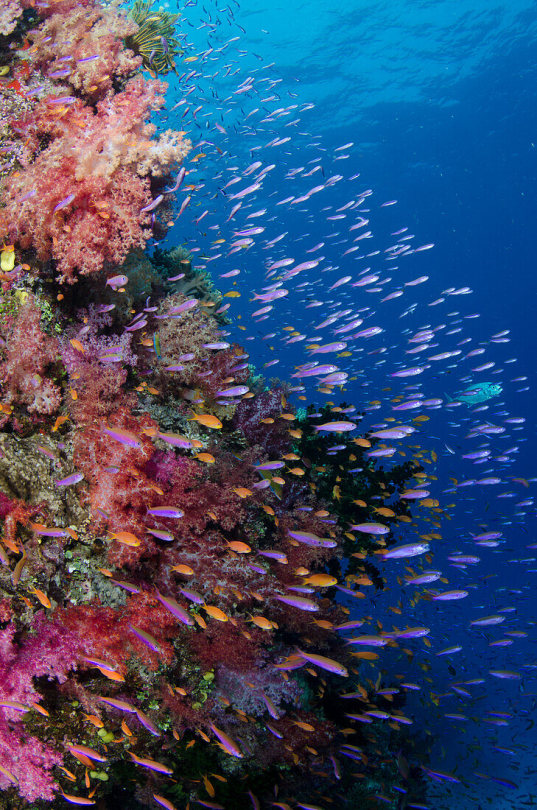

Fiji Reefscape
#fiji#reefs#coral reef#fish#pink#orange#purple#blue#water#ocean#sea#underwater#photography#nature#sea creatures#marine biology
4K notes
·
View notes
Text

Crown-of-thorns starfish (Acanthaster planci)
Crown-of-thorns starfish are found on reefs in the Indo-Pacific region.
(Image credit: Georgette Douwma via Getty Images)
#georgette douwma#photographer#getty images#crown-of-thorns starfish#starfish#marine#acanthaster planci#indo-pacific region#reefs#nature
59 notes
·
View notes
Text

HEY TUMBLR-
84 notes
·
View notes
Text
#australia#good news#environmentalism#science#nature#environment#animals#conservation#coral reef#reef#reefs#marine life#ocean life#sea life
14 notes
·
View notes
Text
In 2013, neurobiologist Kristin Tessmar-Raible and her colleagues published some of the most compelling evidence of a molecular moon clock in an ocean creature. They studied the marine bristle worm Platynereis dumerilii, which looks like an amber centipede with tiny feathered oars running the length of its body. In the wild, the bristle worm lives on algae and rocks, spinning silk tubes for shelter. While reading studies from the 1950s and ’60s, Tessmar-Raible learned that some wild bristle worm populations achieve maximal sexual maturity just after the new moon, swimming to the ocean surface and twirling in circles in a kind of whirling dervish nuptial dance. The studies suggested that changing levels of moonlight orchestrated this mating ritual. “At first I thought this was really crazy in terms of biology,” says Tessmar-Raible, who notes that she grew up far from the ocean, “but then I started talking to colleagues in marine biology and realized that this might not be so uncommon.”
To learn more, Tessmar-Raible and her colleagues kept bristle worms in plastic boxes, feeding them spinach and fish food, and simulating typical and aberrant moon cycles with an array of standard light bulbs and LEDs. Worms raised in perpetual light or in entirely moonless day-night cycles never displayed reproductive rhythms. But worms reared with periodic nocturnal illumination synced their spawning rituals to the phases of their artificial moon. As suggested by earlier studies, Tessmar-Raible found light-sensitive neurons in the worms’ forebrains. And genetic sequencing revealed that the bristle worm has its own versions of essential molecular clock genes found in terrestrial insects and vertebrates. Tessmar-Raible’s conclusion is that the worms have a robust lunar clock analogous to the more familiar sun-synced circadian clock. “This is an endogenous oscillator,” she says. “Something in the body preserves the memory of those nocturnal illuminations.”
In similar studies, Oren Levy and his colleagues collected pieces of living corals from Heron Island reef and housed them in large outdoor aquaria, some of which were exposed to ambient sunshine and moonlight, some shaded at night to block all moonlight, and some subjected to dim artificial light from sunset to midnight and then kept in the dark until sunrise. Each day for eight days before the estimated night of mass spawning, the researchers collected bits of corals from the different aquaria and analyzed the activity of their genes. The corals in natural conditions spawned as predicted and expressed many genes only during or just before releasing their gametes. Corals subjected to artificial light and deprived of moonlight displayed anomalous gene expression and failed to release their gametes.
— The Lunar Sea
#ferris jabr#the lunar sea#science#biology#marine biology#animals#animal behaviour#genetics#astronomy#australia#heron island#great barrier reef#kristin teßmar-raible#oren levy#polychaete#platynereis dumerilii#coral#coral reefs#reefs#reproduction#moon#light#circadian rhythm
40 notes
·
View notes
Text
Reason to Live #9024
Diving and seeing beautiful reefs. – Guest Submission
(Please don't add negative comments to these posts.)
#sad#help#hope#reason to live#depressed#depression#empty#alone#mental illness#anxiety#trauma#guest submission#mental health#dive#diving#swimming#reef#reefs#nature#ocean
54 notes
·
View notes
Text





10 notes
·
View notes
Link
83 notes
·
View notes
Text
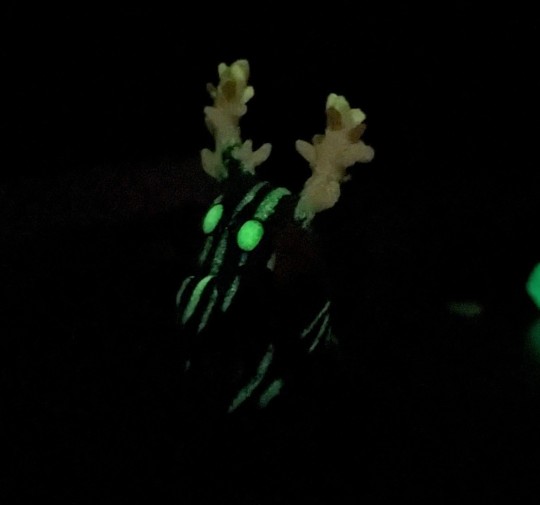
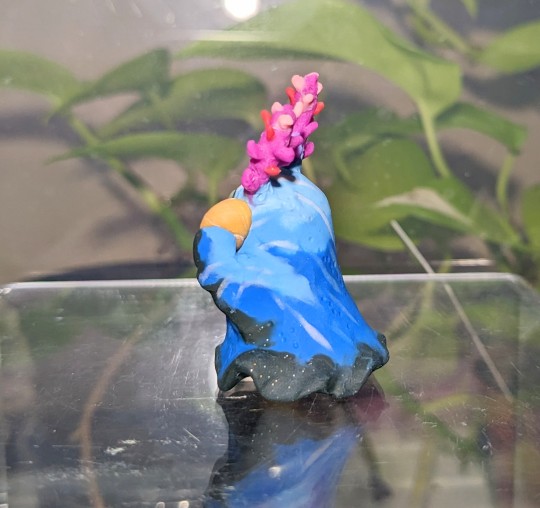



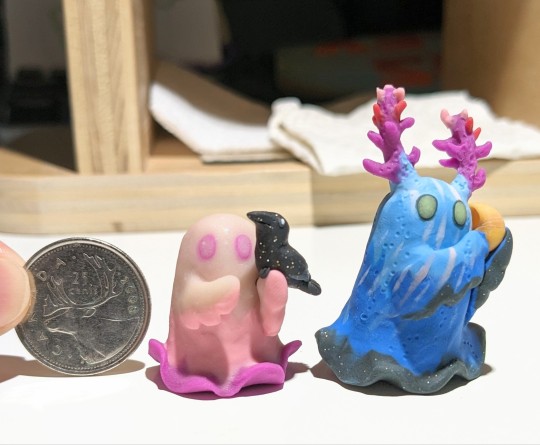

One of my, and the crowd's favourites at AN, the Reef Ghost! He's listening to a real (and tiny) seashell. His 'antlers' are coral, and I gave him little swirls of highlights to mimic the look of light underwater, along with a bit of bubble texturing.
He's also got a nice layering of dark to light as you go lower on his sheet, or deeper, as it were. And he looks fantastic in the dark too! The streaks of light and the antlers came out different colours, which can be tricky to mix and make show on the glowing effect. In the end, he's a proud piece for me, and I'm glad he found a good home that deserves him. :)
If you'd like a spoopy friend, check out Bittythings and Beasts.
#ghost#spoopy#ghosts#halloween#ocean#seashells#polymerclay miniatures#polymerclay#anime north 2023#my art#aughost#reefs#coral reef
10 notes
·
View notes
Text

Great Barrier Reef
#landscape#aerial view#earth from above#coral reef#great barrier reef#reef#reefs#heart#heart shaped#earth#hearts in nature
25 notes
·
View notes
Text
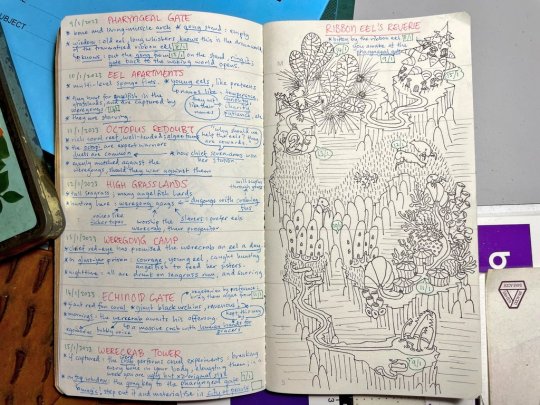
RIBBON EEL'S REVERIE
A crab doctor with human hands; twisted dugongs with claws for arms; captive courage and charity starved.
9/1 - 15/1
#dungeon23
Didn't know where to go from last week's ship battle---so decided to go *deeper*, Inception style: if you get bitten by the giant ribbon eel from that encounter, you fall into a swoon and wake inside her dream-world.
Meant to be a portrayal of the eel's history:
The coral reef of its elverhood;
The seagrass plains of its captors;
Its pain in the pincers of crustacean wizardry.
Originally I wanted a dream-logic geography inside a big eel. But I couldn't find a good guide to moray-eel anatomy. And it was too hard to draw, anyway.
Erased everything and began again. My pencil marks were still visible, though, so the new map follows an eel's rough shape anyway. So that worked out.
+
Had to learn how to draw reef formations, and shells, and crabs. Also found out that moray eels have two sets of jaws (the pharyngeal gate is based on the eel's inner jaws).

So I'm learning stuff, at least!
+
#dungeon23 thing I loved this week: Desolation City, a horror setting---"A black sun hangs over the crumbling city's skyline."---by Giles.
20 notes
·
View notes
Photo

Camouflage: When you think of camo, it’s usually some shade of green for a forest or grassland, or brown or a drier climate. However, in the brightly colored reefs of the Pacific Northwest, many inhabitants go bright, such as this type of large sculpin. Known as a red Irish lord, it is usually found on outcroppings where currents sweep prey to the front. It’s dwarfed by the plumose anemones, but Nat Geo Explorer Kiliii Yuyan couldn’t take his eyes off it. “I love that critter, “ Yuyan says. “I spent an hour underwater and he got his own photo shoot.”
#kiliii yuyan#photographer#national geographic#camouflage#reefs#pacific northwest#sculpin#red irish lord#plumose anemones#marine photography#nature
288 notes
·
View notes
Text

this is where I've been for the past few weeks. sorry, tumblr, but the fishies and the reefs got me back and I'm only grudgingly dry checking things right now.
fic and my usual bullshit will resume once I'm in withdrawal from scuba.
6 notes
·
View notes
Photo

Although they were tragic losses, crashed airships created artificial reefs home to thousands of beautiful fish. - - - #airship #fish #scubadiving #water #reefs #swimming #ocean #digitalart #aiart #colorful #soothing #oceandream #midjourney #aquamarine #marine #digitalillustration (at Underwater) https://www.instagram.com/p/Clhx8Q0LXro/?igshid=NGJjMDIxMWI=
#airship#fish#scubadiving#water#reefs#swimming#ocean#digitalart#aiart#colorful#soothing#oceandream#midjourney#aquamarine#marine#digitalillustration
22 notes
·
View notes
Text
Coral reefs are more than just a feast for the eyes, they are also awash in a stunning array of sounds. The chirps, grunts, and snaps of fish, shrimp, and other reef inhabitants are hallmarks of a healthy coral community rich in animals moving, feeding, calling out to potential mates, and fending off predators. To free-floating coral larvae—each no bigger than a grain of sand—this biological symphony serves as a siren’s song, drawing them to healthy reefs to settle, attach, and grow.
“For more than a decade, we've been listening to reefs in the U.S. Virgin Islands, and we've been using that sound to assess how healthy the reef is,” says WHOI acoustic biologist Aran Mooney. A healthy reef, Mooney says, has a lush, complex soundscape; a damaged one, on the other hand, sounds as degraded as it looks—and coral larvae drifting in the water above can hear the difference.
7 notes
·
View notes
Text
Reason to Live #7868
Coral reefs. – Guest Submission
(Please don't add negative comments to these posts.)
#sad#help#hope#reason to live#depressed#depression#empty#alone#mental illness#anxiety#trauma#guest submission#mental health#coral#coral reef#reefs#ocean#nature
59 notes
·
View notes